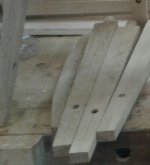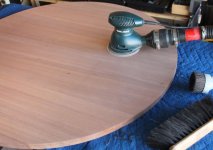mino
Member
Not really, I called these "essentials" for I see these as tools which are internally not inter-changeable/duplicite so one needs them all to cover all basic tasks.Packard said:If this was not a Festool site, you could swap that track saw for a table saw. [big grin]
I grew up with a table saw, so the track saw is still secondary to me, (but gaining in usage.)
Ref Track saw / Table saw, so me a table saw is here to do -certain- things better /and more expensively on tool cost and space cost/ than a track saw. So for a beginner it is an "upgrade tool" and not "essential" one.
You cannot really use a small/simple table saw (no extension, no shop to install it in, no shop DC) -in place- of a track saw. The moment one starts thinking how to handle a full sheet rip is when one realizes how it does not work in "field" settings when you have no RP's Total station to support it etc. On the other hand you *can* do everything a table saw can with a track saw. Sure, not as time-efficient, maybe not as accurate, but you can.
And this being FOG has nothing to do with it. My first tracksaw was $100 Lidl/Parkside model with a really crappy default blade which was dull from the factory. But still, it suddenly enabled me to forego depending on the formatting by the wood yard and their (in) accuracy at it.. I upgraded to a TSC because I -wanted- better, the cams and slides on it are day/night. Not because I had to.


